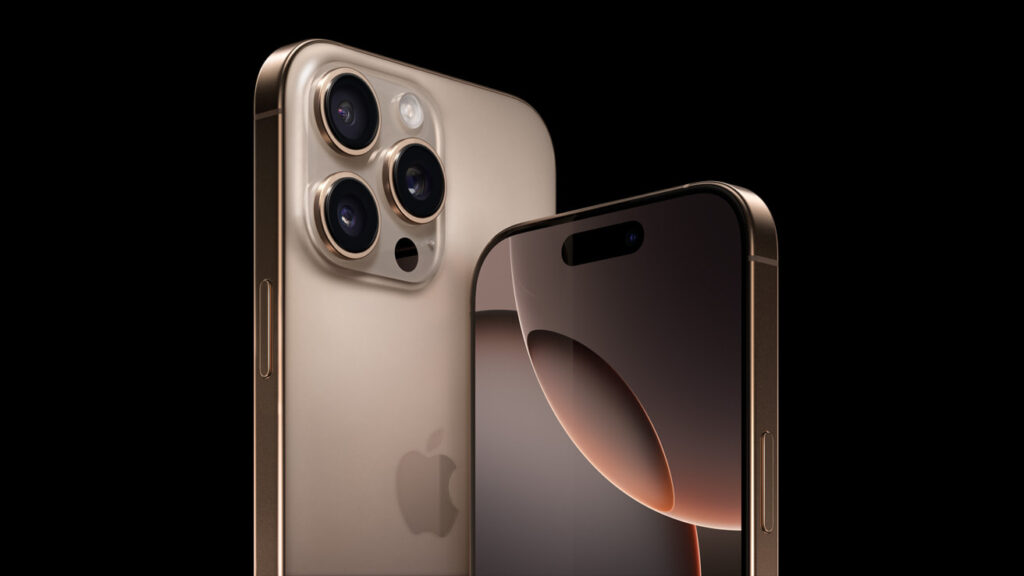Here’s when iPhones may get more expensive
3 min read
If paying $1,000 for a new iPhone already sounded expensive, consumers should brace for even greater sticker shock later this year, CNN says.
President Donald Trump’s tariffs on foreign goods – specifically those sourced from China – are expected to heighten the prices of everyday tech products, from iPhones to laptops, cars and even smaller gadgets like headphones and computer mice.
And iPhone prices could rise substantially and soon – possibly in a matter of weeks or months, according to analysts who spoke with CNN. Like many tech companies, Apple’s supply chain is largely based in China, which now faces a 125% tariff, meaning products and materials from the country are bound to get more expensive.
In yet another escalation in the ongoing trade war with Beijing, Trump announced on Wednesday a 90-day pause in reciprocal tariffs on every country except China. In the near term, Apple and its many partners will have to carefully manage the iPhone inventory currently stored in the US.
But if the Trump administration’s tariffs stick, Apple might have to make long-term adjustments to the way it sources, builds and potentially even releases new products. Apple received an exemption from tariffs on certain products during Trump’s previous administration, but there hasn’t been any indication of whether it will be granted similar immunity this time.
“I think (Apple) will have to go through a period of pain,” said Jack Leathem, an analyst at market research firm Canalys that covers the smartphone industry. “And that will mean… price rises.” Apple declined to comment.
How iPhone prices may change in the US
With 90% of Apple’s iPhone production and assembly based in China, according to Wedbush Securities’ estimates, iPhone prices are likely to rise if Trump’s tariffs remain in place. When and by how much are still up in the air.
The timing largely depends on Apple’s US iPhone inventory, which hinges on consumers demand ahead of anticipated tariff price hikes. While Apple isn’t expected to release its next new iPhone until September, it’s possible prices could rise sooner if Apple runs through its current stock in the US.
“The reality is, the price… increases that we’re going to see will hit all phones from Apple, as well as others, when inventory runs out,” said Ryan Reith, group vice president for the International Data Corporation’s (IDC) Worldwide Device Tracker.
Reith estimates that Apple has about three weeks of inventory in the US that it can “maximize,” while Canalys believes there is likely enough iPhone inventory for the next two to three months. Counterpoint Research, another firm that monitors global smartphone shipments, estimates Apple likely has 4.5 to six weeks of inventory in the US, although February data indicates “a spike to well above those levels,” Gerrit Schneemann, a senior analyst for Counterpoint, said via email.
Although it’s too soon to tell exactly how the news of Trump’s tariffs is impacting US smartphone shipments, Leathem said Canalys has seen “some of the largest numbers of shipments of devices into the market” in recent weeks.
Pricing, however, will depend on whether Apple and its partners decide to absorb some of the additional cost.
Analysts at UBS estimate that the base model of a $1,199 iPhone 16 Pro Max assembled in mainland China could increase by $800, or 67%, while an iPhone 16 Pro assembled in India could see just a $45 increase. Those estimates factor in Trump’s newly announced 125% tariff on Chinese imports and 90-day pause on all other “reciprocal” tariffs. Before Wednesday’s news, the firm had put those price increases at $675 and $120, respectively.
Wireless carriers could also offer discounts on previous generation phones to push customers towards older devices that are already in low inventory, says Reith. Service providers also typically offer monthly installment payment plans for new phones, which could help relieve some of the cost passed down to consumers.
Data from analytics firm Consumer Intelligence Research Partners indicates that 55% of phone buyers in the US – including those who purchase flip phones and basic mobile phones – purchase their device through installment plans like these.




